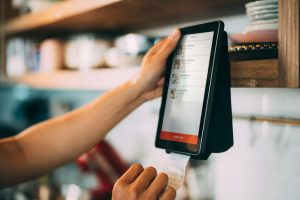So, we’re almost in 2025, and email marketing? It’s still a really big deal, probably bigger than some might think. But figuring out just when to hit that send button, that’s where things get a bit messy, don’t they? It’s not like there’s some magical hour written down somewhere for everyone. What worked last year, or even last month, might not quite do the trick now. Things move fast, and people’s daily routines, well, they just keep shifting around, you know?
For a while, there were these widely accepted ideas about the best times to send emails. You’d hear it from pretty much everyone who talked about digital marketing. People would just point to specific days and specific parts of those days. It was like a rule, almost, for anyone looking to get their messages opened and clicked. But hold on a minute, because that old thinking is getting a little bit worn out, or at least it’s proving to be not so simple anymore.
What used to be the gold standard, like sending an email on a Tuesday morning at 10 AM, that’s just one piece of a much bigger puzzle these days. People are online at all sorts of times, using all sorts of devices, which makes the whole thing a lot more… fluid. It’s not a one-size-fits-all situation, and honestly, it never really was, not truly. We just kind of pretended it was for simplicity’s sake.
The Old-School Thinking About Email Send Times (And Why It’s Changing)
Back in the day, a lot of people would tell you, without even thinking twice, that Tuesday, Wednesday, and Thursday were the days for email. And if you asked them what time, they’d usually say somewhere between 9 AM and 11 AM, local time. The logic there was pretty clear, too. Folks were settled into their work week by Tuesday, not yet thinking about the weekend, and generally, they weren’t swamped like they might be on a Monday.
Then, for Friday, it was usually a no-go, because everyone’s brains are kind of checked out, already halfway to the weekend fun. And weekends? Forget about it, most people just weren’t really checking their work-related emails then. That was the commonly held wisdom, and for many, it seemed to actually work out pretty well. These were the times when folks were generally at their desks, and maybe had a few moments to glance at their inbox.
But things are, to be quite frank, much different now, aren’t they? With everyone having a smartphone practically glued to their hand, they’re checking emails from the breakfast table, on the bus, while waiting in line, and even sometimes during a TV show. The rigid structure of the work week doesn’t have the same hold on email checking habits that it once did. What this means is, those old rules? They aren’t completely wrong, but they’re not the whole story either.
Understanding Your People: The Real Secret to Timely Emails
So, if those old rules aren’t everything, what is the real deal? Well, it mostly comes down to knowing the folks you’re trying to talk to. I mean, really knowing them. Are your customers early birds who get all their emails read before noon? Or are they night owls who catch up on things after the kids are in bed? These sorts of details really, truly matter when you are trying to figure things out.
Think about it this way. If you’re selling something to, say, small business owners, their email habits are probably going to look quite different from, say, college students, or even retired people. Each group has its own schedule and its own ways of using email. It stands to reason, then, that their “best time” will probably be quite different, too, and not just by a little bit. It could be wildly different, which makes common sense.
You also have to keep things like time zones in your mind. If your audience is spread out across a whole country, like for a company doing Mobile app development Delaware, you can’t send an email at 10 AM EST and expect people on the West Coast to see it at their 7 AM. They’re still probably just waking up, or maybe they haven’t even had their coffee yet. Sending at the wrong local time could really make your efforts just sort of fizzle out.
It’s about what they do day-to-day, what their work looks like, and what their personal life involves. Some people use email mostly for work stuff, others use it for everything. Some check it constantly, others just a few times a day. Trying to lump everyone together is just not going to cut it anymore. What we’re really getting at here is that your mailing list isn’t just one big blob of people.
It’s Not Just When, It’s What You’re Sending, Too
Another big thing to think about, besides who you’re sending to, is what you are actually sending them. Not all emails are created equal, right? A quick little sale announcement might be opened at a different time than a longer newsletter that’s packed with a lot of stuff to read. People often treat different kinds of emails in very different ways, and it kind of changes how they prioritize opening them.
For example, if it’s a promotional email, like a flash sale or a discount code, people might be more likely to open that during a quick break, like their lunch break or maybe in the early evening when they’re just relaxing. They might be in a buying mood then, or at least in a browsing mood. These types of messages generally demand less mental effort from the recipient, so they can be consumed quickly.
But a longer, more detailed newsletter, one that has articles and a bunch of things to read? That might get more attention on a weekend morning, or maybe even on a Friday afternoon when someone has a bit more downtime. It’s when people have more headspace, more time, to really sit down and take in what you’ve got to say, without feeling rushed or like they have to quickly put it away. It just makes good sense, doesn’t it?
And then there are your transactional emails, like order confirmations or shipping updates. Those are usually opened right away, no matter when you send them, because the recipient is actually expecting them. They want to know their purchase went through or when their package is arriving. So, for those, the “when” isn’t quite so important, because the user expectation is much higher and more immediate. They’re waiting for it.
Don’t Just Guess, Do Some Tests!
Alright, so all this talk about “knowing your audience” and “what you’re sending” is all well and good, but how do you actually figure it out? You can’t just wave a magic wand. The real, honest-to-goodness way to sort this out is by testing things. You’ve got to try different days, different times, and then see what actually performs the best for your list of people. This is how you stop just guessing.
Start with some of those generally accepted times, if you want, but then try sending similar emails at other times too. Maybe one group gets it on Tuesday morning, another on Wednesday afternoon, and yet another on Saturday morning. Then you look at the results. What were the open rates like? Did more people click on the links? Did anyone actually buy something or sign up for what you were promoting?
Your email marketing platform, whichever one you use, usually has tools built right in for this kind of thing. You can set up A/B tests pretty easily, sometimes even automatically. It’s important that you don’t just send one test and then decide that’s it forever. You need to keep trying new things and checking the data. Audience behavior can change, and so should your sending strategy, you know? It’s not static.
Pay attention to things like your different segments. Maybe your younger subscribers respond best in the evenings, but your business clients check email first thing in the morning. This is all information you get from looking at the numbers. It truly is a continuous learning process, and the more you learn, the better your emails will likely do. This is how you make your email strategy better and better.
What 2025’s Email Sending Might Look Like
Looking ahead to 2025, there are some pretty cool things starting to happen that are going to make this “best time to send” question even more interesting, if you ask me. We’re already seeing a lot more smart technology, like different kinds of artificial intelligence, getting involved in scheduling emails. This means your email platform might just start figuring out the best time for each individual person on your list.
Imagine a system that learns when Sarah usually opens her emails, and when John checks his, and then sends the email to them specifically at their peak time, not just a general time for everyone. That’s some really personalized stuff, and it could seriously make your open and click rates go up. It takes a lot of the guesswork out of it for the sender, and it aims to deliver the message at the absolute right moment for the recipient.
Also, mobile devices are just getting more and more important, aren’t they? People are doing almost everything on their phones now. This means emails need to look good and be easy to read on a small screen, no matter when they get opened. And the short, punchy emails that get straight to the point? Those are probably going to become even more popular, as people scroll through their inboxes quickly.
So, while the basic ideas of knowing your audience and testing are still going to be the backbone of a good email strategy, the tools we have to do that are just going to keep getting better. It’s a pretty exciting time to be doing email marketing, actually, because the possibilities for reaching people exactly when and how they want to be reached are just growing and growing. It just makes things much more effective for everyone involved.
In the end, finding the “best time” to send an email isn’t about some universal schedule you can just copy and paste. It’s a unique puzzle for every business and every email list. You’ve really got to understand the people you’re sending to, think about what you’re sending them, and then, most importantly, you must be willing to try things out and keep an eye on what happens. It truly is a process, not a destination. No one can just tell you the magic answer because it changes.
Frequently Asked Questions About When to Send Email Marketing
Q1: Is there a universally best day or time to send marketing emails in 2025?
A: Not really, no. While some general trends exist, the absolute best day or time really depends on your specific audience. What works for one group might not work at all for another. You’ve just got to figure it out for your own people.
Q2: Should I send emails on weekends, or are they still a bad idea?
A: Weekends aren’t necessarily a bad idea anymore. For some audiences, especially those with more free time then, weekend emails can actually do quite well. It depends on what you’re sending and who it’s for.
Q3: How do I figure out the best time for my audience to get emails?
A: The best way to sort this out is by testing different send times and days. Look at your email open rates and click-through rates. Your email platform usually has tools that help you with this analysis part, so make sure you use them.
Q4: Does the type of email I send affect when it should be sent?
A: Oh, absolutely it does! Promotional emails might do well during breaks, while newsletters with lots of reading material could be better on a weekend. Transactional emails are usually opened right away, whenever they arrive.
Q5: Will AI change how we determine email send times in the future?
A: Yes, it definitely looks like it will. AI is already starting to help by learning individual subscriber behaviors and then scheduling emails for each person at their personal best time. This means even more personalized sending.










